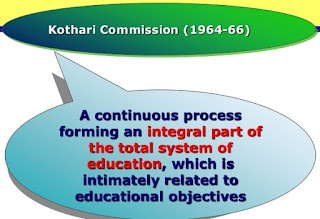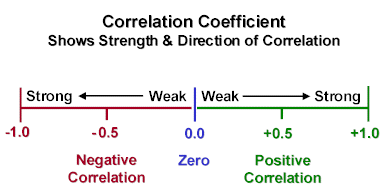(1) Free and Compulsory Education:
Strenuous efforts should be made for the early
fulfillment of the Directive Principle under Article 45 of the Constitution seeking to provide free and
compulsory education for all children up to the age of 14. Suitable programs should be developed to reduce the
prevailing wastage and stagnation in schools and to ensure that every child who
is enrolled in school successfully completes the prescribed course.
(2) Status, Emoluments and Education of
Teachers
(a) Of
all factors which determine the quality of education and its contribution to
national development, the teacher is undoubtedly the most important. It is on
his personal qualities and character, his educational qualifications and
professional competence that the success of all educational endeavour must
ultimately depend. Teachers must, therefore, be accorded an honoured place in
society. Their emoluments and other service conditions should be adequate and
satisfactory, having regard to their qualifications and responsibilities.
(b) The
academic freedom of teachers to pursue and publish independent studies and
researches and to speak and write about significant national and international
issues should be protected.
(c)
Teacher education, particularly in-service education, should receive due
emphasis.
(3) Development of Languages
(a) Regional Languages: The energetic
development of Indian languages and literature is a sine qua non for
educational and cultural development. Unless this is done, the creative
energies of the people will not be released, standards of education will not
improve, knowledge will not spread to the people, and the gulf between the
intelligentsia and the masses will remain, if not widen further. The regional
languages are already in use as media of education at the primary and secondary
stages. Urgent steps should now be taken to adopt them as media of education at
the university stage.
(b) Three-Language Formula: At the
secondary stage, the State Governments should adopt, and vigorously implement,
the three-language formula which 'includes the study of a modern Indian
language, preferably one of the southern languages, apart from Hindi and
English in the Hindi-speaking States, and of Hindi along with the regional
language and English in the non-Hindi speaking States. Suitable courses in
Hindi and/or English should also be available in universities and colleges with
a view to improving the proficiency of students in these languages up to the
prescribed university standards.
(c) Hindi: Every effort should be made to
promote the development of Hindi. In developing Hindi as the link language, due
care should be taken to ensure that it will serve, as provided for in Article
351 of the Constitution, as a medium of expression for all the elements of the
composite culture of India. The establishment in non-Hindi States, of colleges
and other institutions of higher education which use Hindi as the medium of
education should be encouraged.
(d) Sanskrit: Considering the special
importance of Sanskrit to the growth and development of Indian languages and
its unique contribution to the cultural unity of the country, facilities for
its teaching at the school and university stages should be offered on a more
liberal scale. Development of new methods of teaching the language should be
encouraged, and the possibility explored of including the study of Sanskrit in
those courses (such as modern Indian languages, ancient Indian history,
Indology and Indian philosophy) at the first and second degree stages, where
such knowledge is useful.
(e) International Languages: Special
emphasis needs to be laid on the study of English and other international
languages. World knowledge is growing at a tremendous pace, especially in
science and technology. India must not only keep up this growth but should also
make her own significant contribution to it. For this purpose, study of English
deserves to be specially strengthened.
(4) Equalization of Educational Opportunity
Strenuous
efforts should be made to equalize educational opportunity.
(a)
Regional imbalances in the provision of educational facilities should be
corrected and good educational facilities should be provided in rural and other
backward areas.
(b) To
promote social cohesion and national integration the Common School System as
recommended by the Education Commission should be adopted. Efforts should be
made to improve the standard of education in general schools. All special
schools like Public Schools should be required to admit students on the basis
of merit and also to provide a prescribed proportion of free-studentships to
prevent segregation of social classes. This will not, however, affect the
rights of minorities under Article 30 of the Constitution.
(c) The
education of girls should receive emphasis, not only on grounds of social
justice, but also because it accelerates social transformation.
(d)
More intensive efforts are needed to develop education among the backward
classes and especially among the tribal people.
(e)
Educational facilities for the physically and mentally handicapped children
should be expanded and attempts should be made to develop integrated programs
enabling the handicapped children to study in regular schools.
(5) Identification of Talent
For the cultivation of excellence, it is
necessary that talent in diverse fields should be identified at as early an age
as possible, and every stimulus and opportunity given for its full development.
(6) Work-experience and National Service
The school and the community should be brought
closer through suitable programs of mutual service and support. Work-experience
and national service, including participation in meaningful and challenging programs
of community service and national reconstruction, should accordingly become an
integral part of education. Emphasis in these programs should be on self-help,
character formation and on developing a sense of social commitment.
(7) Science Education and Research
With a
view to accelerating the growth of the national economy, science education and
research should receive high priority. Science and mathematics should be an
integral part of general education till the end of the school stage.
(8) Education for Agriculture and Industry
Special
emphasis should be placed on the development of education for agriculture and
industry.
(a)
There should be at least one agricultural university in every State. These
should, as far as possible, be single campus universities; but where necessary,
they may have constituent colleges on different campuses. Other universities
may also be assisted, where the necessary potential exists, to develop strong
departments for the study of one or more aspects of agriculture.
(b) In
technical education, practical training in industry should form an integral
part of such education. Technical education and research should be related closely
to industry, encouraging the flow of personnel both ways and providing for
continuous cooperation in the provision, design and periodical review of
training programs and facilities.
(c)
There should be a continuous review of the agricultural, industrial and other
technical manpower needs of the country and efforts should be made continuously
to maintain a proper balance between the output of the educational institutions
and employment opportunities.
(9) Production of Books
The
quality of books should be improved by attracting the best writing talent
through a liberal policy of incentives and remuneration. Immediate steps should
be taken for the production of high quality textbooks for schools and
universities. Frequent changes of textbooks should be avoided and their prices
should be low enough for students of ordinary means to buy them. The
possibility of establishing autonomous book corporations on commercial lines
should be examined and efforts should be made to have a few basic textbooks
common throughout the country. Special attention should be given to books for
children and to university- level books in regional languages.
(10) Examinations
A major
goal of examination reforms should be to improve the reliability and validity
of examinations and to make evaluation a continuous process aimed at helping
the student to improve his level of achievement rather than at 'certifying' the
quality of his performance at a given moment of time.
(11) Secondary Education
(a)
Educational opportunity at the secondary (and higher) level is a major
instrument of social change and transformation. Facilities for secondary
education should accordingly be extended expeditiously to the areas and classes
which have been denied these in the past.
(b)
There is a need to increase facilities for technical and vocational education
at this stage. Provision of facilities for secondary and vocational education
should conform broadly to the requirements of the developing economy and real
employment opportunities. Such linkage is necessary to make technical and
vocational education at the secondary stage effectively terminal. Facilities
for technical and vocational education should be suitably diversified to cover
a large number of fields, such as agriculture, industry, trade and commerce,
medicine and public health, home management, arts and crafts, secretarial
training, etc.









